       Read the rest of Holey Frack: Utah is Starting to Look Like Swiss Cheese Fracking is a big, rising industry in the United States both in scale and the sheer amount of landscape that stands to change. Utah in particular is starting to look more like Swiss cheese as it continues to open up more oil and natural gas fracking sites. To show just how devastating fracking can be, Daily Kos put together a small batch of Google Earth images showcasing immensely large and eerily multicolored waste pools of some fracking sites. The image you see above shows just one of the sites that is nearly a mile wide on each side. The scale of the pools is also comically large compared to nearby truck containers. via INHABITAT |
Agricultural and Biofuel News - ENN
Wednesday, September 18, 2013
Holey Frack: Utah is Starting to Look Like Swiss Cheese
Tuesday, September 17, 2013
12 Tips for Going Green in College
| The best four years of your life seem to go by in a blur of classes, your social life (Greek-lettered or otherwise), and…sleeping till noon. It's finally your life, and you get to do whatever you want! So why not make the autonomous decision to do what you can to live a greener, healthier lifestyle? It's important that we, as the future movers and shakers of America, think about how our current behaviors are affecting the environment and our future. Wouldn't you like to graduate and head out into in a world that isn't insanely hot and filled with garbage? Here are 13 tips for going green NOW so you can enjoy the planet and a greener, brighter future. #1: Unplug your cellphone, iPad, TV, laptop, and such, post charging. Your dad probably bought you four power strips during your freshman year in an effort to be over-prepared. Use them! Plug all your device chargers into one strip and then shut off the strip when they're finished charging. It takes four seconds and it's an easy way to conserve energy. #2: Wash your laundry in cold water and let it air-dry. Going from having your mom do your laundry to doing it yourself can be a nightmare. What exactly do all those buttons mean?! If your university uses washers and dryers that don't allow you to manually change the water temperature, selecting the "delicate" cycle will allow you to wash your clothes in cold water. Washing in cold water saves energy and prevents your fabrics from fading. Also, make sure your loads are FULL! This allows for fewer loads and, therefore, less water use. When it comes to drying, invest in a drying rack. It costs around $10, and air-drying, while good for the environment, also prevents your clothes from shrinking. Besides, it saves you a boatload of quarters. #3: Ditch the plastic water bottles. Here's an economics lesson that you don't need to pay $500-a-credit-hour for: Paying 1,900 times MORE for something that flows freely from a tap is BAD. But that's what you're doing whenever you buy bottled water—and it's a waste of plastic, to boot. Shell out $20 for a good reusable water bottle that will save you a fortune on bottled water (and probably last way longer than your four years on campus). #4: Buy a mug. While you're shopping for beverage containers…invest in a ceramic cup or a stainless steel travel mug and pledge to ditch those paper cups from your college's coffee shop. You might even get lucky and score a discount on the drinks you buy. #5: Put the car keys down. Chicks dig a dude on a bike. While you should probably leave your Harley at home, try opting for a bicycle as your main transport. The benefits are numerous: Your commute to class is exercise, you're not polluting, and you're saving money on gas. If that's not a win/win/win situation then what is? #6: Print less. Is it really necessary for you to print out your professor's entire published works…single-sided? Nope. Use your e-reader or iPad to read the document and to bring notes to class. Just make sure to keep the Fruit Ninja–playing in class to a minimum! #7: Print double-sided. When you must print, print double-sided. This way you cut your paper use in half, shaving a few pennies off your printing supplies bill in the process. And while you're at it, use recycled paper for heaven's sake! Every major office store sells it now. #8: Rent! Textbooks are expensive and are you REALLY going to consult your calculus textbook thirty years from now? Take advantage of your university's textbook rental service if it has one. If not, go online. Even Amazon rents textbooks now. #9: Clean naturally. Sharing a bathroom can be gross. That doesn't mean you need to expose yourself to harsh chemicals in order to get it clean. Instead of all the bleach, try using a vinegar solution or one of these cheap, easy homemade cleaning recipes that work to clean your bathroom surfaces. They're better for the environment, and you'll be able to use your teeny-tiny dorm bathroom without falling prey to a coughing fit. #10: Turn off the tap. When brushing your teeth, turn the faucet off while scrubbing away. When showering, turn off the water while you're shampooing, turning it back on to rinse. Every few seconds count! #11: Recycle…everything. Everyone knows you can recycle paper and plastic—but not everyone does it. In fact, college kids are less likely than older generations to recycle, according to surveys by the Pew Research Center. So be the change! Learn to love the blue and green bins! You can recycle other items too, such as clothes. Cut up old T-shirts to use as cleaning rags, or donate them to charity. And here's how you can make money off clothes in good condition that you no longer want. Check out earth911.com to find umpteen dozen ways to recycle anything and everything you need to dump. Just think twice before you toss something into the landfill. #12: Talk to your student government. If making your campus a greener place is important to you, talk to your student senate. You'd be surprised about how many students share your sentiments. The more voices are heard, the more the college will do to heed the demand. What do we want? Utensils made from vegetable fibers! When do we want them? NOW! via Rodale News http://www.rodale.com/tips-going-green |
Monday, September 16, 2013
“Natural” on food labels? Ain’t necessarily so…
Q: I am doing legislative research on food policy for one of my state's senators on the definition of "natural." As things stand, it's difficult for consumers to understand what "natural" means on food labels. How should the FDA define this term so it is accurate and not misleading?A: I was traveling in New England when your question arrived, and it sent me right to the nearest Hannaford supermarket. Hannaford makes this research easy. Sections everywhere in the store are labeled "organic and natural."Organic is no problem. Certified organic products must be made with ingredients raised or grown without artificial fertilizers, pesticides, hormones, antibiotics, irradiation, sewage sludge or genetic modification. But what are we to make of Honey BBQ All Natural Potato Chips containing 20 ingredients, among them monosodium glutamate, yellow food color, and undoubtedly genetically modified corn and soy, but "no hydrogenated fats and gluten free"? Or Healthy Natural Dog Food containing meat by-products and other such things but "no artificial preservatives, colors or fillers"? The Food and Drug Administration is not much help. Its answer: "From a food science perspective, it is difficult to define a food product that is 'natural' because the food has probably been processed and is no longer the product of the earth. That said, FDA … has not objected to the use of the term if the food does not contain added color, artificial flavors or synthetic substances." If you have made it through all the not's in this non-definition, you can begin to understand how the FDA can allow high-fructose corn syrup to be "natural." Even though enzymes, synthetic or not, are required to convert cornstarch to this mixture of glucose and fructose, it does not contain artificial colors or flavors. But the products I mentioned do. Yellow No. 5 is an artificial color. You must assume that the corn or soy in any "natural" product is genetically modified unless the label says GMO-free or Certified Organic. You may be someone who has a hard time considering GMO ingredients "natural." In the last decade, new products marketed with "natural" claims have proliferated, and it's easy to understand why. Marketers love the term. "Natural" sells products, not the least because consumers consider it a synonym for healthful and, often, for organic. Anyone would rather buy "100 percent natural seltzer water" – "calorie-free, no sugar, no sodium, gluten-free" (things never found in water) – than plain seltzer. While "natural" does not necessarily mean "healthy" or even "healthier," it works splendidly as a marketing term and explains why many junk-food manufacturers are switching from expensive organic ingredients to those they can market as "natural." The FDA isn't fixing this situation because, according to a statement in response to a petition by Center for Science in the Public Interest, it's "not an enforcement priority." Manufacturers of highly processed foods could not be happier with this nondecision. In the absence of regulation, enter litigation. In recent years, advocacy groups have filed dozens of lawsuits seeking to ban "natural" claims on foods containing ingredients that seem unnatural, especially those genetically modified. Judges tend to say it's the FDA's problem and are calling on the agency to define the term. The U.S. Department of Agriculture, which is responsible for meat and dairy products, has attempted to clarify what it means by "natural." Its Food Safety and Inspection Service says meat and poultry can be labeled "natural" when they are minimally processed and have no artificial flavorings, colorings or preservatives. USDA's Agricultural Marketing Service says "naturally raised" means the meat must come from animals produced with no hormone growth promoters, no antibiotics and no animal by-products. How about all of the above? And if the public really can't tell the difference between "natural" and "organic," the closer the definition of "natural" is to that of "organic," the less confused they will be. Perhaps you could advise the senator to begin with the organic standards. And then toss in working definitions that exclude anything synthetic, artificial and more than minimally processed. You should expect food industry lobbying against this idea to be fierce. But the public will be better served if the compromises in defining "natural" come at the end of the negotiations rather than at the beginning. Marion Nestle is the author of "Why Calories Count: From Science to Politics," "Food Politics" and "What to Eat," among other books. She is a professor in the nutrition, food studies and public health department at New York University, and blogs at www.foodpolitics.com. E-mail:food@sfchronicle.com via Food Politics http://www.foodpolitics.com/2013/09/natural-on-food-labels-aint-necessarily-so/ |
Sunday, September 15, 2013
6 Scrumptious Meals You Can Cook in a Dishwasher (Yes, You Read That Right)
       Read the rest of 6 Scrumptious Meals You Can Cook in a Dishwasher (Yes, You Read That Right) he idea of cooking salmon in your dishwasher is a pretty well known kitchen parlor trick that, by itself, ends up wasting a lot of power and water. However, in a recent NPR segment, a pioneering food writer of dishwashing cuisine named Lisa Casali says she has figured out a trendy new way of using heat sealed containers—such as canning jars and food vacuum bags— to cook all her food while cleaning a full rack of dirty dishes. Talk about multitasking... Suddenly cooking with your dishwasher doesn't sound so crazy. Instead, it’s actually an economical, and not to mention, environmentally friendly way to cook. It will also keep your house cooler (no running oven) and you won’t have to watch over it or worry about burning your meal. We've rounded up a small sample of six meals that you could be throwing into your dishwasher right now! via INHABITAT |
Saturday, September 14, 2013
Food and Sustainability Leaders- Video Playlist Guide
| Originally published on Cooking Up a Story This video playlist guide features some of the most thoughtful, and articulate thought-leaders who contemplate the defining challenges facing society in the 21st century. Whether it's relating to global food and energy production, climate change, water scarcity, the ability of nations (including our's) to produce their own food, reduce poverty and misery, and defining the proper role of government in our lives—these are the kinds of big-picture sustainability issues that are represented in the talks and interviews below. Most (if not all) of these videos remain as relevant, perhaps even more prescient with the short passage of time than when many of them were first published in 2009 and 2010. |
Joel Berg, executive director of the New York City Coalition Against Hunger (NYCCAH), and author of the book All You Can Eat: How Hungry Is America, is a fierce food advocate for the poor in America. Perhaps, as a society we should pay more attention to people like Berg whose organizations are on the frontline dealing with people in economic distress, everyday.
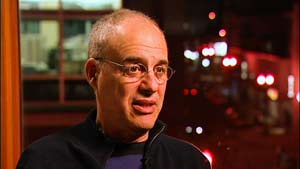
New York Times Columnist, author of How To Cook Everything, discusses his book Food Matters: A Guide to Conscious Eating.

40% of the food we produce gets thrown out! Jonathan Bloom, Journalist, food waste crusader, and author of author of American Wasteland: How America Throws Away Nearly Half of Its Food, shares what he has uncovered.
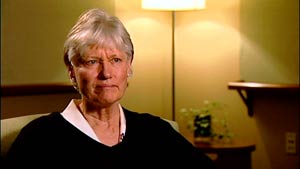
In this 4-part series, journalist, environmentalist, and author of Uncertain Peril: Genetic Engineering and the Future of Seeds, Claire Hope Cummings speaks out on behalf of the natural world, and for a new approach to solving the environmental, social, and philosophical problems inherent in our present food system.
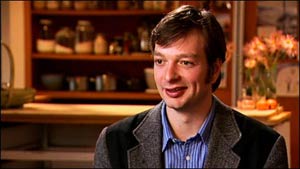
Curt Ellis talks about his documentary King Corn in this 3-part series.

Food activist and author Daniel Imhoff provides historical information about the federal Food and Farm Bill, the single largest program effecting farmers and those who are poor. Imhoff also talks about some of the important issues that define the then upcoming 2008 Farm Bill Legislation (6-parts). In addition, a talk that Dan Imhoff gave to the Friends of Family Farmers, an Oregon advocacy organization that supports local family farmers, about his latest book CAFO: The Tragedy of Industrial Animal Factories.
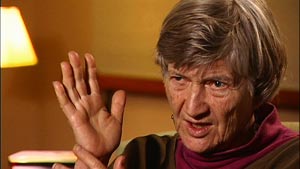
Joan Dye Gussow talks about her life, and her book This Organic Life that tells the story of how Joan Dye Gussow began her first garden and her long quest to change the food system.

Alan Kapuler is a public domain organic seed breeder, and is often regarded as the founding father of the organic seed movement. This 5-part series explores the depth and passion of this scientist whose important work continues in the field developing open pollinated public domain plants that produce seeds that can be reused and shared freely for the public good.
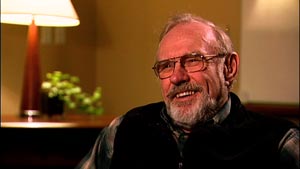
A long-time leader in the sustainable agriculture movement, a Distinguished Fellow at the Leopold Center for Sustainable Agriculture, and a third-generation farmer, offers some thoughtful reflections upon the future of agriculture.

David Korten, author of When Corporations Rule The World, minces no words about the dangers our capitalist system poses to democracy in his interview with us. Korten also gives a talk about his newer book, Agenda For a New Economy where he describes the current state of our economy and society—he claims is largely shaped by the most effective (and cynical) educational tool ever devised: mass media advertising.
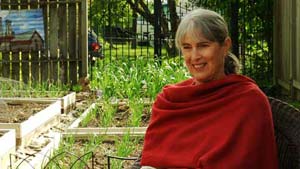
Deborah Madison's new cookbook "Vegetable Literacy" draws inspiration for its recipes directly from the garden. In this 2-part series, Madison talks about her latest book, and how her own garden has helped her expand upon what she prepares in the kitchen.
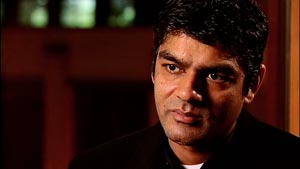
Raj Patel, author of The Value of Nothing, explains what food sovereignty means, and why people around the world are fighting to have a say in their own food system.
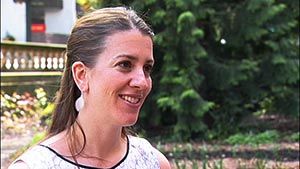
While carefully connecting the dots between industrial agriculture, and climate change, food activist and author Anne Lappé underlines the inherent weaknesses of conventional agriculture, and the terrible costs to the planet if we do not reform our food system.

In this 3-part series, expert food system analyst Ken Meter, defines what constitutes a strong local food system, and why it's so important to the health and well-being of a region.

Carlo Petrini, founder of Slow Food International shares his views about food, politics, and American culture on the road to a sustainable food nation. Alternating between light-hearted humor and searing political insight, Petrini delivers an explosive commentary on American society, and what it means to have a good, clean, and fair food system.

In this 3-part series, Deborah Kane from the Portland-based environmental organization Ecotrust talks with Michael Pollan about his book In Defense of Food. Introducing terms like "nutritionism" and describing much of our modern food diet as being comprised of highly processed "food-like substances", Pollan cautions against fully embracing the science behind nutrition because it has not served us well in the 20th century. For those attracted to the wealth of products on the market tauting the latest beneficial nutrients (Omega-3 fatty acids, antioxidants, vitamin C, etc.), Pollan offers a more traditional approach: eat more whole foods (less highly processed foods), eat less meat, and more plant-based foods.
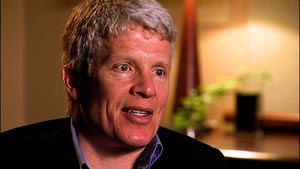
Paul Roberts, veteran journalist, and author of The End of Food, talks about the consequences of our industrial agricultural system. Though he points out, there have been successes, they have come at a steep cost to the environment, and many of them are proving not to be of lasting value.
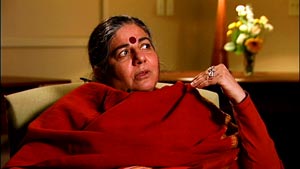
This 3-part series of interviews with Dr. Vandana Shiva about the future of food is one of the most contentious, revolutionary, profound, and important discussions of any we have had to date on Food News. This is more than about the safety of biotechnology; it's about the ability to have a choice in the foods that we eat, and for our farmers to be able to freely re-use their own seeds, to grow food in the manner that they choose. In developing countries, the ability to avoid falling into a hopeless cycle of debt brought upon them from the high risk proposition that the biotechnology regime imposes upon first-world farmers.
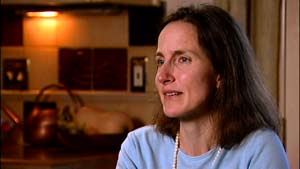
Ann Vileisis, author of Kitchen Literacy, explores the fundamental question, what do we know about our food, and how did we come to acquiring this knowledge. By examining our more recent history, Vilesis sheds light on the profound role mass advertising has played in shaping public opinion in developing our modern food culture.
The post Food and Sustainability Leaders- Video Playlist Guide appeared first on Cooking Up a Story.
via Cooking Up a Story http://feedproxy.google.com/~r/CookingUpAStory/~3/8AxY_Q5T0Bc/story01.htm
Friday, September 13, 2013
Out today! Eat, Drink, Vote: An Illustrated Guide to Food Politics
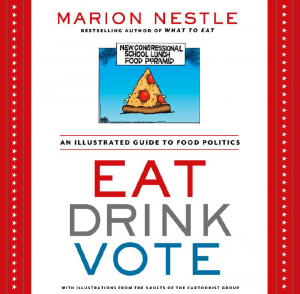 Three items: 1. The Cartoonist Group is sponsoring a caption contest. The winner gets a signed copy of the book. 2. If you live in New York: copies will be available at the Union Square farmers' market tomorrow (Wednesday) from noon to 1:30 p.m. 3. If you'd like a preview, here's what Nanci Hellmich says about it in today's USA Today ( This online version comes with a generous helping of interactive cartoons):
Nestle shares more than 250 of her favorite cartoons and comics in her new book, Eat, Drink, Vote: An Illustrated Guide to Food Politics, (Rodale Books, $18.99) created in collaboration with The Cartoonist Group. About a third of adults in this country are obese, which is roughly 35 or more pounds over a healthy weight. A third of children and teens are overweight or obese. Obesity increases the risk of many diseases including type 2 diabetes, heart disease and some types of cancer. She says the current food environment results from the need of food companies not only to make a profit but to report an increase in profits to Wall Street every 90 days — and do so in a highly over-abundant and fiercely competitive marketplace. To lose weight, she says, people have to eat less, but eating less is terrible for business. Hence: politics. Vote with your fork, she says. "Even better, vote with your vote!" And #4: a couple of other items related to the book:August 31 Review in the San Francisco ChronicleAugust 14 Interview with Kerry Trueman on Amazon.com via Food Politics http://www.foodpolitics.com/2013/09/out-today-eat-drink-vote-an-illustrated-guide-to-food-politics/ |
Thursday, September 12, 2013
The Upanishads and other thanks for food
I love collections on obscure (and sometimes not so obscure) food themes. This book collects prayers, incantations, and thanks for food from may cultures.Adrian Butash. Bless This Food: Ancient and Contemporary Graces from Around the World. New World Library, 2013.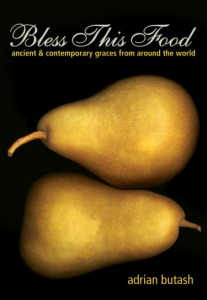 In addition to the expected Christian prayers giving thanks for what is about to be consumed, the book has others, like this one from the Upanishads: I am food, I am food, I am food.A thought for the start of the weekend. Enjoy! via Food Politics http://www.foodpolitics.com/2013/08/the-upanishads-and-other-thanks-for-food/ |
Wednesday, September 11, 2013
World’s Largest Polar Bear Puppet to Lead a Global Day of Arctic Action
 As the ice sheets melt from climate change, Shell is poised to begin a new drilling campaign in the Arctic. That is, if they can make their way past a polar bear the size of a double-decker bus. Greenpeace has commissioned Christopher Kelly to create a massive puppet that symbolizes the plight of the poles. Dubbed "Aurora", the bear will lumber past some of London's most iconic landmarks on its way to the Shell headquarters on the South Bank.   Read the rest of World's Largest Polar Bear Puppet to Lead a Global Day of Arctic Action via INHABITAT http://inhabitat.feedsportal.com/c/34923/f/648037/s/30c256c1/sc/10/l/0Linhabitat0N0Cworlds0Elargest0Epolar0Ebear0Epuppet0Eto0Elead0Ea0Eglobal0Eday0Eof0Earctic0Eaction0C/story01.htm |
Subscribe to:
Comments (Atom)





